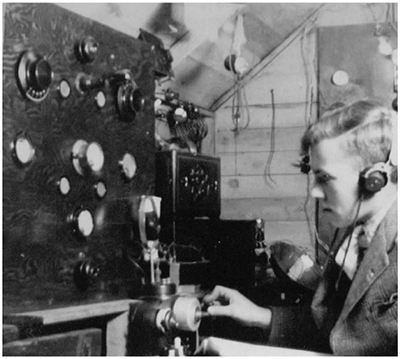Remembering John H. Battison (1915-2012)
James O’Neal
Technology Editor
joneal@nbmedia.com Word reached us during the last week of August that John Henry Battison had reached the end of his life. Although this was not unexpected— he was just days shy of his 97th birthday and had been experiencing some health problems— it nevertheless came as a blow to those who knew him and what he had accomplished in his lifetime.

Perhaps you’ll remember him as the driving force behind the establishment of the Society of Broadcast Engineers. However, there was a lot more to John’s life than that. He was truly an engineer’s engineer and one of the few still around when both radio and television broadcasting began during the last century. He truly saw it all happen in his lifetime—crystal sets to HDTV.
If you met John once, you never forgot him—he was a man of physically small stature, was always outspoken and still maintained his British accent nearly 70 years after leaving his English homeland. He did his growing up in London, just at the right time to become one of the many young people caught up in magic of broadcasting when radio entered the home in the 1920s.
Like many of us who made a career in broadcasting, he was so enamored with the new medium that he took it to bed with him—listening to distant broadcasts when he was supposed to be sleeping. John was stealthier than most, however, and concocted an “early warning” system to signal his parents ascent up the stairway to make sure that lights were out and young John was getting sufficient rest for school the next day.
Speaking of school, John admitted that more than once he feigned health issues so he could stay home and experiment with his receiver constructed to receive the very early 30-line mechanical TV transmissions.
When he’d completed his formal education, radio and TV were in his blood and he went to work for Ekco, a pioneer British radio and television manufacturer. By this time the BBC had established a regular television broadcast schedule and there was a growing demand for “tellies.”
Unfortunately, political doings in Berlin soon spelled an end to both U.K. TV broadcasting and his employment at Ecko. With war formally declared, John followed up on another love of his—aviation. He enlisted in the RAF and spent the next six and a half years defending the homeland, piloting both Spitfire fighters and Lancaster bombers.
The professional video industry's #1 source for news, trends and product and tech information. Sign up below.

John Battison at age 16 operating a homebrew amateur transmitter Once the final “all-clear” was issued, John journeyed to the States to see what broadcasting was like over here, soon landing a job at Kansas City’s KMBC. From there, he spring-boarded to CBS television network in New York that was starting up. He worked with Peter Goldmark and recalled doing field strength measurements in connection with color transmissions from CBS’s experimental UHF transmitter.
John later decided to try out television broadcasting for himself, and with the help of a factory deal from the Dumont folks, set out for New Mexico to launch one of that state’s early TV stations. There John did it all—engineering duties and appearances on the other side of the camera. Two of the staples of early TV broadcasting were wrestling matches and children’s shows. John announce the matches, providing commentary as the hulks did their body slams and headlocks. At other times, he would don different garb and become a slightly different type of engineer—a locomotive driver—as he hosted the local kiddies hour.
John was afflicted with a lifelong wanderlust, and in time left New Mexico to become an international broadcast consultant. When he eventually returned to the States, he learned that two leading electrical/radio engineering societies—the AIEE and the IRE—had decided to merge into one organization (the IEEE). John was fearful that this amalgamation would leave radio and TV engineering staffs without proper representation and decided to launch a professional organization directed solely to the interests of the men and women who operated broadcast facilities—the Society of Broadcast Engineers. He personally mailed out thousands of membership queries to help get the new organization off the ground in 1964.
John continued in broadcast engineering, later becoming director of engineering at Ohio State University’s telecommunications department. He also authored some 15 engineering textbooks and published more than 500 technical articles. Another of John’s broad range of interests was religion. Somewhere in his busy life, he made time to become ordained an as Anglican Church priest, and for many years conducted services in Columbus, Ohio, making a 160 mile roundtrip commute from his home every Sunday to preach the gospel. This ministry continued until just a few weeks before he passed away on August 28.
The broadcast engineering world is a better place due to John’s efforts. The shadow he left was a very long one. He will be missed by us all.
